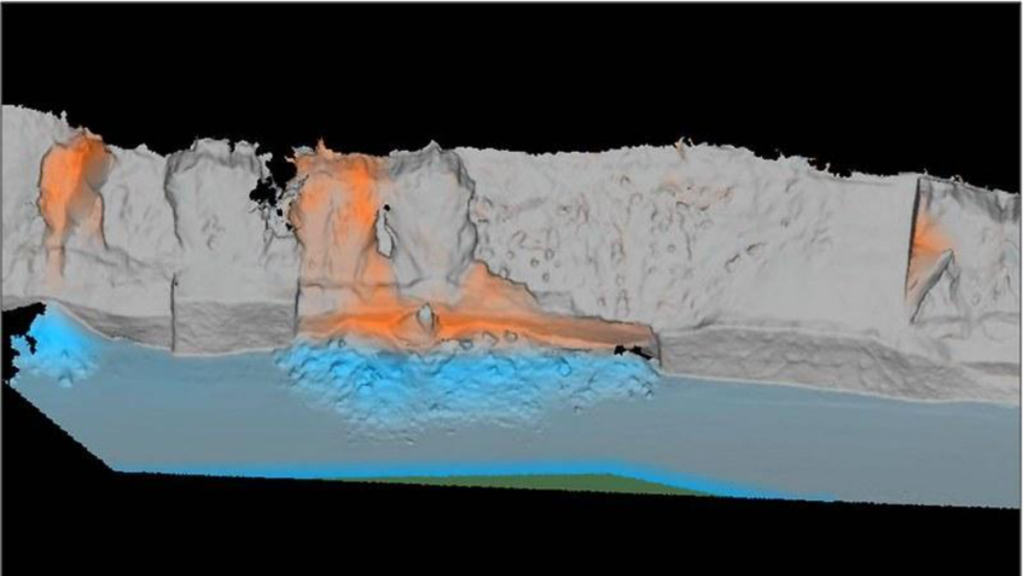Data collection is a relatively complex and hassle job, especially if you have to collect information in more challenging locations. Fortunately, the ever-evolving society has made progress in providing better and easier ways to make all work more efficient. The Light Detection and Ranging, LiDar, have been making names for its versatile applications to various fields.
LiDar made significant changes to different industries. Its accurate mapping and data collection have created a safer working environment for miners and constructors. Also, it has produced quicker solutions for various terrain problems. You can read further to learn more about LiDar technology and other applications.
What is LiDar, and how does it work?
Contents
Light Detection and Ranging, or LiDar, is a method used to measure the exact distance of an object from the earth’s surface through remote sensing. Through light, in the form of a laser, it measures ranges to the earth’s surface. Its primary components are a scanner, laser, and specialized GPS receiver.
There are two types of LiDar, bathymetric and topographic. The topographic LidAr uses a near-infrared laser to map the land. Meanwhile, the bathymetric are used to measure seafloor and riverbed elevations by emitting water-penetrating green light. Usually, airplanes, drones, and helicopters assist in acquiring LiDar data. With this wide range of scope, data collection is relatively more accessible.
To quickly explain how LiDar works, it follows this principle: throw a laser light to an object on the earth’s surface, then calculate the time it takes to return to the source. Though there are more technical formulas and explanations behind the LiDar, its mechanism simply follows the principle above.
On the other hand, one of the few things the LiDar can offer is ballfast management that can provide accurate imagery data and surveys. This feature can help in identifying problems earlier to provide faster and appropriate interventions. In fact, because of its impressive attributes, LiDar is used in different types of field industries.
Additionally, LiDar technology is low-cost and requires lesser human dependence. With this technology, compared to other land surveying and mapping technologies, LiDar is much more affordable and produces highly accurate results. Also, it is automated and will require much lesser dependence on human workers.
Moreover, one of the attributes of LiDar technology can still function under low light. It means you can work day and night, even in challenging weather conditions, without any interruption. Additionally, you will not need to worry about the data quality because of its excellent resolution and accuracy. Thus, with LiDar, you can also generate your much-needed information in much less expensive technology.
What are the applications of LiDar?
As impressive as it sounds, different fields can use LiDar technology. Its outstanding attributes have benefited a lot of companies. Without a doubt, its excellence has reached more areas. Here are a few industries that make use of LiDar.
Agriculture
One of the few ways LiDar can significantly help the agriculture industry is by producing 3D models of farmlands. LiDar helps the farmers get a hold of far more accurate maps of natural resources around the area. It helps develop preventive measures when possible soil erosion has been perceived through the maps.
Moreover, it helps in agricultural planning and management by determining the soil suitability to their crops. Consequently, the data also helps in precision agriculture. Farmers can plan their farm site ahead of time.
Mining
Some mining industries use LiDar in their pre-mining assessment. They collect data on the terrain, and they can evaluate where the artifacts are possibly situated. In a way, it enables in-depth artifact assessment for the previously impossible mining industries. Moreover, the technology helps increase mining safety by preventing the miners from nearing many dangerous cliffs through the processed map.
Construction
As a tool used in mapping terrain, LiDar cameras can scout the construction site, and then it will be analyzed to produce a 3D model of the landscape. This characteristic benefits the construction industries by providing enough information to start a simulation and analysis to develop the project. Also, it helps in identifying additional repair and maintenance requirements on the project. Moreover, LiDar can do everything faster.
Automotive
The LiDar has been integrated as an advanced driver assistance system for providing information about the vehicle’s surrounding environment. It offers a long-distance detection that helps the drivers to avoid accidents. Other higher technology advancements to autonomous cars are equipped with LiDar sensors for fully automated self-driving vehicles.
Oil and Gas Exploration
As mentioned, LiDar surveys the terrain and collects information. Once everything is analyzed and reviewed, you can locate where artifacts are found. One of the fantastic things about it is that it is also possible to identify oil and gas. The LiDar mapping surveys will accurately give you detailed information of whatever the environment and conditions are.
Takeaway
Fortunately, works such as land mapping and terrain surveying have been made easier for workers. The LiDar made it possible and also created a relatively safer workplace for them. This fantastic innovation will further grow and be integrated as technology continues to move beyond.

